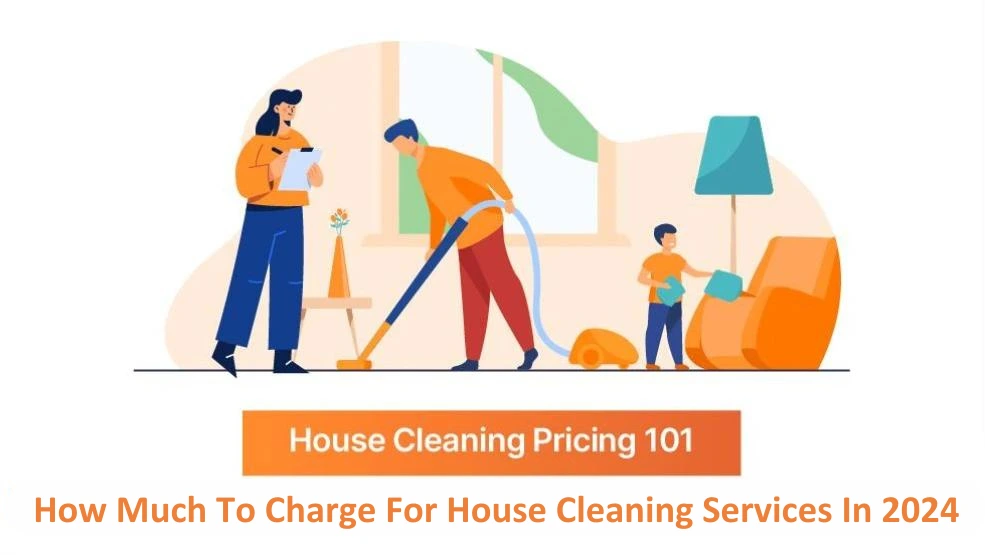How much should you charge your customers for house cleaning services? There is no “one size fits all” answer or magic formula to help you decide what to charge for your house cleaning services. Deciding on a price point can be tricky.While you want your house cleaning pricing to be competitive, you want to make enough to cover the labor, cleaning supplies, and overhead costs. You need to keep in mind certain things when deciding the right house cleaning price for your services. This guide will help you come up with a price point that’s competitive and profitable at the same time.
House Cleaning Pricing: 7 Factors to Consider
There are several factors you need to consider while deciding your house cleaning pricing, but the 7 most crucial ones are discussed below:
- Calculate Labor Costs
How many employees do you have? How much do you pay them hourly/daily/monthly? Even if you are the only one doing the cleaning, don’t forget to pay yourself. Determine their hourly rate and multiply it with the number of workers required to do the cleaning job. Then add 18% payroll to that. That’s your bare minimum amount, and it doesn’t factor in your overhead costs and other factors.
- Consider Overhead Costs
Once you determine the hourly rate, add 50% to it to cover these overhead costs. Some of these costs include:
- Marketing and advertising
- Travel time to and from the client
- Fuel and maintenance costs of the vehicle
- Additional labor costs if needed
- Cleaning supplies and cleaning equipment
- Taxes
- Health insurance
- Liability insurance
- Inflation
- Factor in Your Profit Margin
Your company needs to make a profit to survive. This means you need to add a markup. After adding the labor cost and the overhead costs, add 33% as your markup. You can reduce this percentage if you want to be competitive, need the money, or need the clients.
- Visit the House
Don’t make the mistake of giving an estimate over the phone. Visit the house and finalize the rate depending on these factors:
- What’s the size of the home? There are two common ways to determine this: square footage or the number of rooms. The size of the house helps you figure out how much time, resources, effort, and supplies you’ll be needing to clean the house. The larger the home, the more you should charge for your house cleaning service.
- What’s the condition of the home? Take photos of the house or do a walkthrough to see the condition of the house. The dirtier the house, the more cleaning to do, which means you’ll need to invest more time, effort, and supplies. The worse the home’s condition, the more you should charge for the cleaning.
- Where’s the home located? If you have to travel far, you need to charge more for fuel and travel time. Don’t forget to scope out the house cleaning pricing in the area to get a better idea of how much your competition is charging and how much the clients are willing to pay.
ProTip: You can consider scheduling clients of the same area on the same day. Zuper can help you optimize the route so you can cut down on your travel time and costs.
- Your Experience Level
If you’ve been in the industry for a long time, you deserve to charge a premium rate for the technical know-how and the reputation you have built. If you are less experienced, you may have to wait until you have the experience to demand premium rates.
- Type of Cleaning
How much you charge for house cleaning services depends on what type of cleaning you’re expected to do. The kind of cleaning falls into these categories:
- Routine cleaning: This involves basic cleaning such as mopping, vacuuming, dusting, cleaning the countertops, etc. These tasks are simple and don’t require much time and effort investment, and hence you can charge less.
- Move-in/move-out cleaning: A move-in/move-out clean is a deep clean that involves scrubbing stubborn areas like vents, kitchen cabinets, or underneath the big appliances. You can charge more for this type of cleaning because of the significant investment of time, effort, and cleaning supplies.
- Vacant property cleaning: A bare property is simpler to clean, even if it’s a large home, as it is free of furniture and other home decor items. This means you can charge less for this type of cleaning.
- Cleaning rental properties: Landlords use cleaners to keep their rental properties in top shape. These are either empty, semi-furnished, or fully-furnished properties. So, charge according to how much time, effort, resources, and supplies you’ll need to clean the rental property.
- One-off and deep cleaning costs: If the space hasn’t been cleaned in a while, a deep cleaning is typically needed. It involves scrubbing, vacuuming, wiping, and dusting all things – from furniture, walls, appliances, and floors to fixtures. Since it’s a significant investment, it costs more.
- Cleaning homes with pets: Cleaning a home with pets is quite a task. Pets shed fur, litter, urinate, walk with muddy paws, etc., which can extend the time you spend cleaning the house. You can charge a small premium for cleaning homes with pets.
- Eco-friendly or organic cleaning costs: If you have clients who prefer organic or eco-friendly cleaning, you might not be able to use industrial cleaning solutions. Eco-friendly or organic solutions can add to the cost. Hence you can charge an additional fee to your regular cleaning service charge.
- Extra Services
You need to decide what your regular (standard) house cleaning service should include. Everything other than that should be charged extra. For example, if your routine cleaning doesn’t involve changing sheets or cleaning the refrigerator, add a small fee to those services. Some of the services that you can charge an additional fee include:
- Cleaning outdoor spaces, like patios and patio furniture
- Cleaning inside big appliances like the oven or refrigerator
- Washing windows inside out
- Cleaning kitchen cabinets
- Doing laundry
- Changing linens
- Washing or putting away dishes
- Spot-cleaning carpets
From invoicing to payments and everything in between, Zuper makes the payment process easy for you. Try Zuper for FREE.
Calculate House Cleaning Pricing: 4 Common Methods
The four methods used to calculate the house cleaning service rates include:
- The Square Footage Method
Square footage is a way to measure the home size. If you want to use this method for pricing, you need to first decide how much you’ll charge per square foot. For example, if your charge per square foot is $10 and the home size is 3,000 square feet, you need to multiply $10 by 3,000. The cleaning cost is $30,000.
- Per Room Rate Method
This method helps you get better ROI as you can charge each room individually depending on how long it can take to clean that room. For example, a kitchen will take more time than a bathroom.
- Per Hour Rate Method
If you choose per hour rate, determine your hourly rate based on your business (types of services) and what your competition is charging.
- Flat Fee Method
In this method of charging a flat fee for a service, the client pays you not for your time but for the problem you solve. However, this method lets you earn the same amount of money, regardless of how large the house is or how fast you can get the job done.Get paid faster. Zuper makes it fast and easy to estimate, track, and win house cleaning work—and get paid on the spot when the job’s done. Book a FREE demo.
Final Thoughts
So how much to charge for house cleaning services? Now you know that it depends on lots of factors and pricing methods. Use this guide to figure out how much you should charge for your house cleaning services. Your prices might not be exactly the same as others, and they shouldn’t be. But they should be just suitable for you and your clients.








